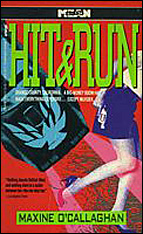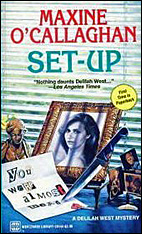Thu 26 Oct 2017
by Dan Stumpf
(Note: This was written in 1981, the early days of Cable Satellite TV, before there were on-screen video guides or anything like that; when cable stations bloomed and vanished daily, and they ran anything — anything — in the small hours of the night just to sell advertising. I was working Third Watch in those days, and on my nights off I sometimes flipped around the dial…)
“There are strange things done ’neath the midnight sun…”
–Robert W. Service
Service would feel right at home with Cable TV. They do things late at night on television that no one ever talks about.
In those bleary hours after the bars close and before the doughnut shops open. Strange images flit across the screen, interspersed more or less at random between ads for Country Music and Diet Pills, and the black-and-white phantoms, transfixed for a moment on a flickering screen that is often the sole illumination in a sleeping house, are apt to go anywhere, do anything: murder, make love, or burst into song. Pictures of people long dead strut and fret their fearful ninety minutes or so at the whims of writers and directors who are mostly dust now.
These are the Ghosts of Old Movies, roaming the night, and the restless, channel-changing viewer who stumbles across them, be he insomniac, inebriate or both, may witness tales that he will relate at peril of disbelief.
It was at such a time that I, wide-awake, sober, and no higher than one can get from a glass of Diet Pepsi, chanced upon one of those works that re-define Surrealism; a fragment of one of those films that must have seemed so impressive to post-war French cinéastes and philosophers. Let me try to describe it to you as I saw it, coming in somewhere in the middle and thus caught unawares by the wonder of it all.
As the screen kindles into life, we see a jungle village, somewhere in Africa. A crowd of dark-skinned natives and a mustached Cowboy (?) are genuflecting in front of the Chief’s hut.
Inside the hut, a white man in a leopard-skin and top hat (??) is ministering to the Chief’s son. They are alone. The white man gives the black man a shot from a hip flask that knocks him stiff as a board, whereupon whitey blacks his face with soot, dons the son’s clothing, and passes as him, walking through the kneeling natives to where a mule is tethered on the outskirts of the village.
En route, the soot mysteriously vanishes from his face. He mounts the mule anyway and gallops off with the natives and the Cowboy, who have tumbled to him, in hot pursuit. The white man/witchdoctor rides past some potted palms, is thrown from his mount, and suddenly gasps in horror.
The scene shifts suddenly to a completely different-looking jungle where a lion is walking off in an entirely irrelevant direction. Cut back to the white witch doctor, who can apparently see the lion (wherever it is) and is frightened by it. He climbs a tree, the lion makes a few half-hearted jumps at some other tree, and wanders off.
Then a gorilla swings through the branches, lands next to our hero and starts making amorous eyes at him. The white man leaps from the tree and lands among the natives who have gathered beneath it. The mustached Cowboy has apparently wandered off unnoticed. Cut to commercial.
When we get back, the natives have escorted the captive honky back to their jungle village. Suddenly a group of Mounties (???) rides up. The head Mountie halts his men, turns to the captive and demands, “Where’s Gene Autry?”
I turn up the sound, wondering if I could have heard correctly and how the hell did Mounties ever get into Africa anyway. But the scene shifts to a trading post elsewhere in the jungle, where none other than Gene Autry himself is trying to convince a winsome heroine that he did not kill her father. Suddenly the mustached Cowboy enters and gets the drop on Gene, who is quickly escorted to a heavily-guarded hut and locked up with an old man whose function in the story seems somewhat indeterminate.
We now cut back and forth between the mustached Heavy, who is trying to get the heroine to sign something, and Autry in Durance Vile. Gene quickly subdues his native guards (by getting them to reach through the barred windows for beads and trinkets, then tying their hands together) and runs from the hut, which turns out not to have been locked after all.
Then a bunch of other stuff happens and before long Autry and his stuntman have freed the white slaves from the diamond mine (????) and the Heavy, seeing that the jig is clearly up, leaps into a covered wagon with the heroine and rides off, vigorously pursued by Autry’s stuntman.
The ensuing chase, however, is set not in Africa, but among the oversize boulders and dusty trails of Gower Gulch, California, a landscape familiar and overly-familiar to every viewer of B-Westerns. The Heavy wrecks the wagon, the stuntman rescues the girl, and the Mounties, who have apparently been following at a respectful distance, ride up with Smiley Burnette (for it was he, it turns out, who was the white witch doctor in leopard-skin and topper) having somehow learned of Autry’s innocence en route to this appointment in Samara.
The scene shifts again to the deck of a westbound boat. Gene Autry, Smiley Burnette and some miscellaneous Cowboys are serenading the heroine. The Mounties are gone, but the Native Chief and his children are aboard, dressed in western garb and singing Harlem tunes.
As “The End” settles across the screen, we fade out, and — seconds ahead of an appeal for Lee’s Press-on Nails — the title of this Jungle Epic dances across the screen. It is Round-Up Time in Texas (Texas?????)
Somehow it seems to fit.
I love this film and all films like it. There is an unconscious audacity operating in films as cheap as this one. I mean, when you watch a good movie, or even most bad ones, you generally have some inkling of what is going to happen next. Or at least you know it won’t be something totally off the wall. But there are moments in some books and movies that defy rationalization. They simply exist. And they restore to me that sense of childlike wonder that should always be present in one’s critical faculties. As long as there are films like this to be discovered I shall never grow old.
ROUND-UP TIME IN TEXAS. Republic Pictures, 1937. Gene Autry, Smiley Burnette, Maxine Doyle, The Cabin Kids, Champion. Director: Joseph Kane.


